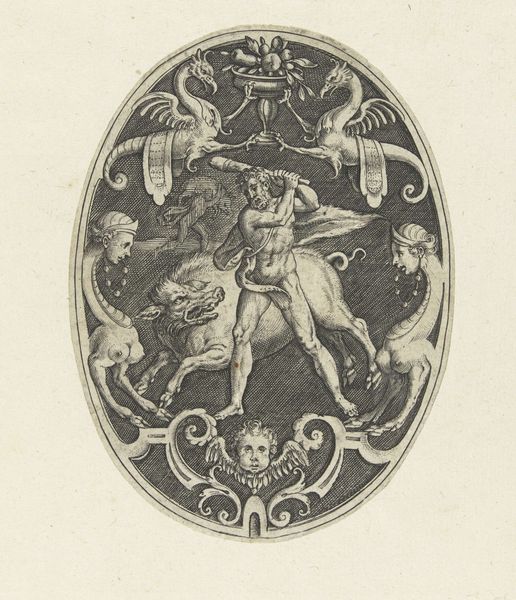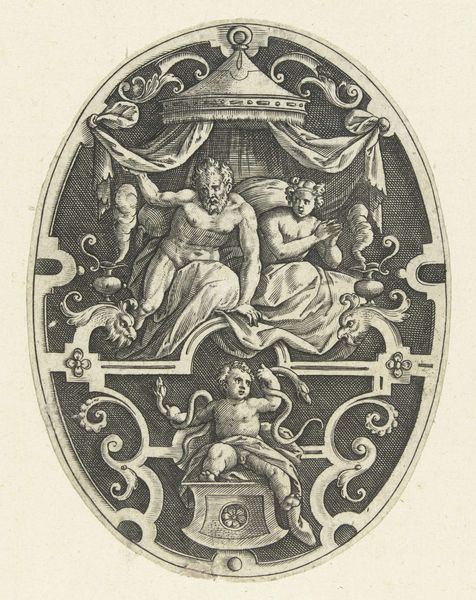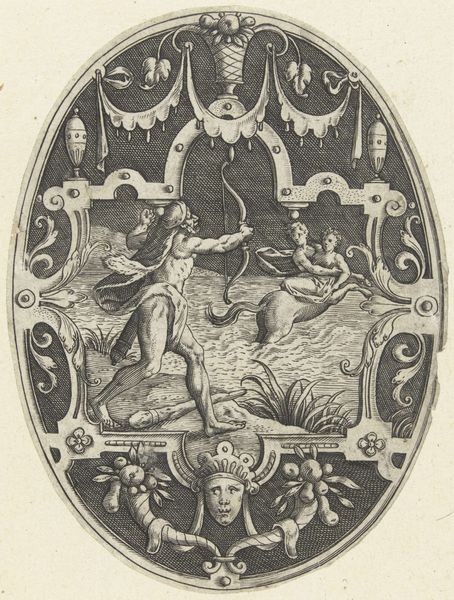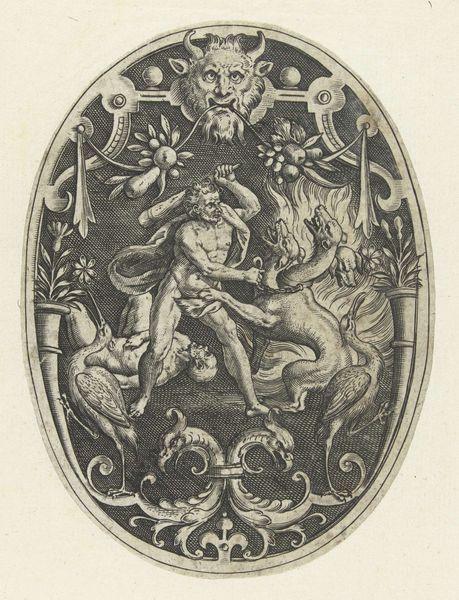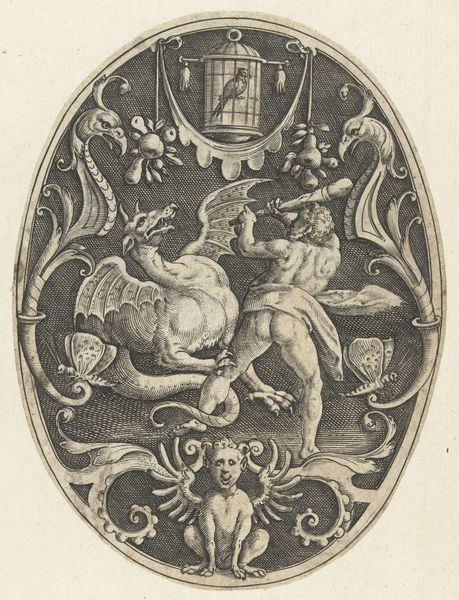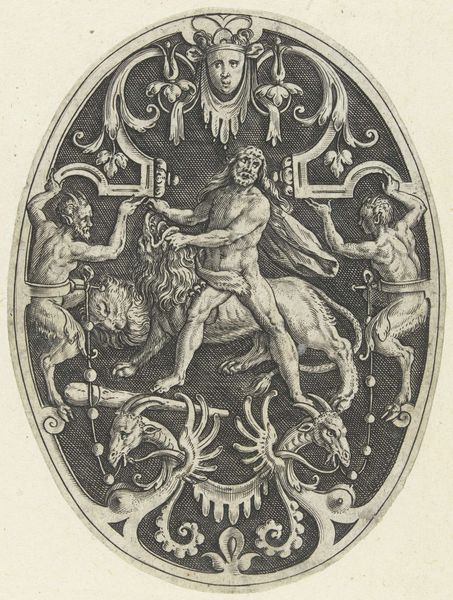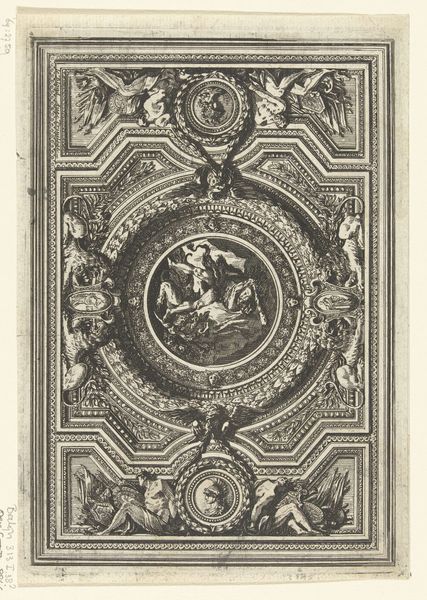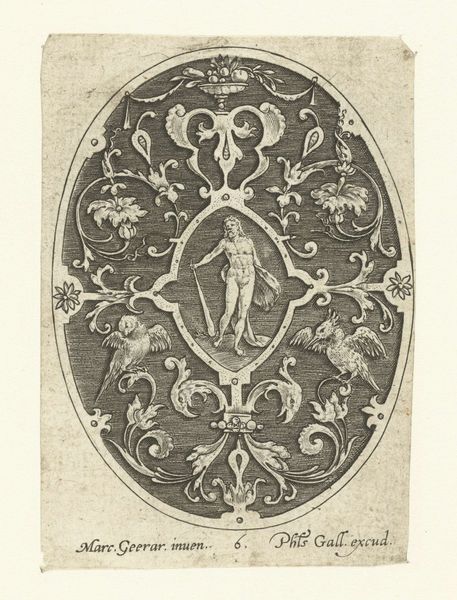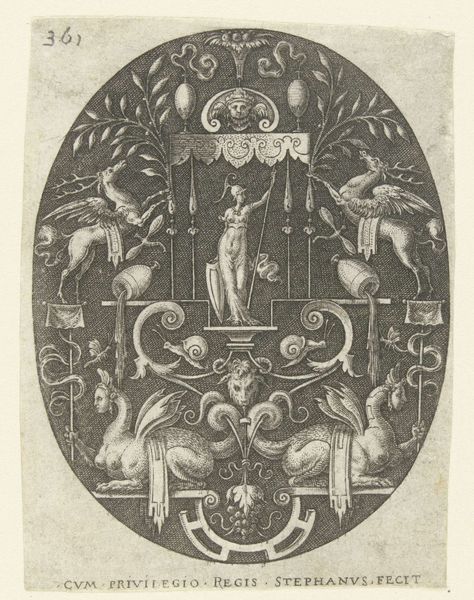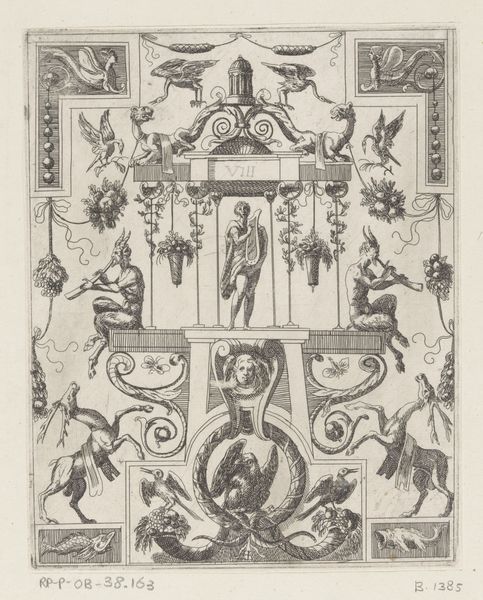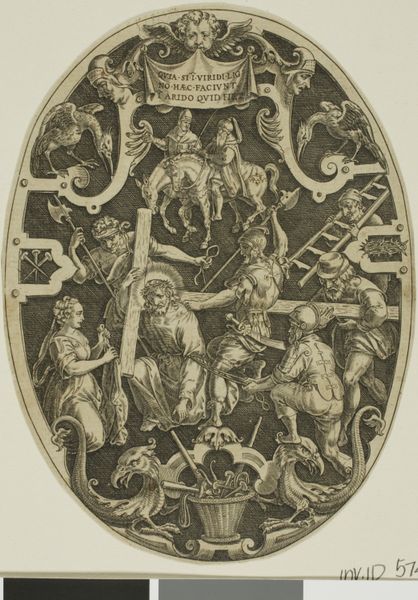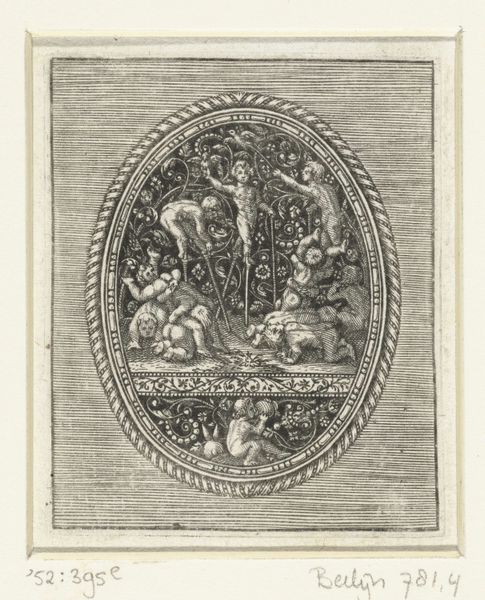
print, engraving
#
allegory
# print
#
old engraving style
#
figuration
#
limited contrast and shading
#
history-painting
#
academic-art
#
engraving
Dimensions: height 115 mm, width 85 mm
Copyright: Rijks Museum: Open Domain
Curator: What a dynamic little piece! The tight composition and stark lines give it a real sense of contained energy. Editor: Indeed. This engraving, "Hercules in strijd met de centauren," which translates to "Hercules in battle with the centaurs," by Gerard de Jode, was created sometime between 1519 and 1591. The piece is part of the Rijksmuseum's collection and presents a dramatic clash between the hero and mythical creatures. Curator: It’s visually quite dense, isn't it? Almost claustrophobic. I’m drawn to how the central figures are wrestling; Hercules seems to be at the height of his strength. Do you think this portrayal challenges or reinforces dominant ideologies regarding masculinity, and perhaps what the 'civilized' does to the "barbaric"? Editor: Absolutely, that is central to understanding such a piece. De Jode's rendition pulls directly from established allegorical and historical painting traditions, reflecting a common Renaissance-era preoccupation with idealizing the heroic male form but also framing power dynamics. It's not just about a battle, but about a supposed victory of reason and order – represented by Hercules – over untamed instinct, symbolized by the centaurs. What message does repeating the narratives, embedding this in the public imaginary transmit? Curator: I'm also noticing the decorative elements framing the central scene. The masks and the owl add this whole layer of commentary that feels both celebratory and slightly ominous. What are the politics embedded in choosing classical stories for art? What about deciding how and when to show it? Editor: These peripheral figures function as framing devices common during the time. And in the same breath as markers of status for the collector, yes, definitely adding nuance to the core narrative through association with related concepts or deities. As for your valid question on politics of choosing to revive this story... the act of looking back to antiquity became linked to civic and nationalistic ambitions in many European powers, offering templates for leadership and moralizing narratives for citizens. Exhibiting it within the Rijksmuseum situates this narrative within a canon, and in that way shapes the dialogue. Curator: A powerful reminder that even seemingly straightforward historical artworks can speak volumes about power, representation, and cultural values. This look has definitely shed light on how layered Gerard de Jode's engraving actually is! Editor: Indeed. Reflecting on how art continues to speak across centuries certainly makes for more nuanced museum visits.
Comments
No comments
Be the first to comment and join the conversation on the ultimate creative platform.
